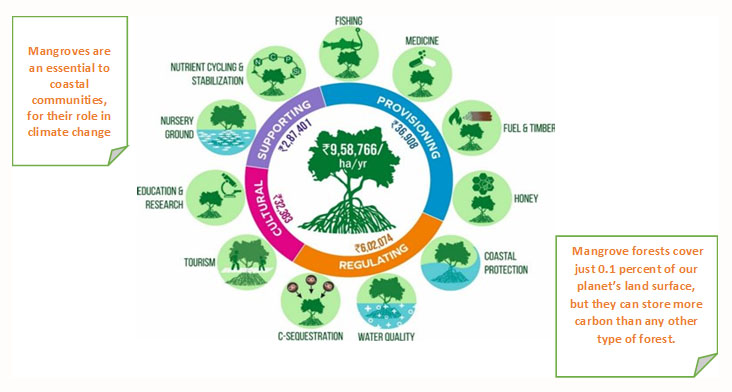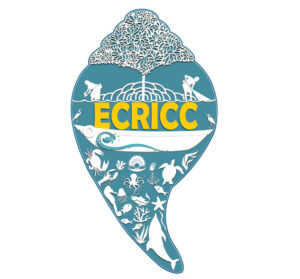Benefits of Mangroves to human communities
Mangrove ecosystems support a wide diversity of people in various ways. They PROTECT coastal populations, they act as a SHIELD from climate change induced extreme weather events and ABATES the impacts of vulnerable natural events such as cyclones and sea surges. They are vital especially in REDUCING coastal erosion and flooding, BUFFER salinity changes and intrusion, and retard runoff.
They have proven critical for SAVING human lives and act as shelter belts for protection of inland homesteads, agricultural crops, livestock and aquaculture. The complex root system of mangroves DISSIPATES the wave energy and their heights and lower the wind inflow velocity and the water currents during coastal storms.
The roots slow the flow of water, TRAPS excess sediment, thus enable sediments to get deposited in the roots i.e. PROMOTES sediment accretion and REGENERATES nutrients. A number of harmful metals and particles get deposited on the roots, that helps FILTER the river water of the pollutants and reduce the contamination of water.
These ecosystems SUPPORT human communities in their livelihoods, GENERATE employment and income generation such as tourism, fishing, etc.
They CONTRIBUTE enormously to the food chain, DELIVER medicine, honey, fuelwood, timber, tannin, genetic, ornamental resources and other natural products. Mangroves thus BOOSTS the local economies of the coastal inhabitants.

Mangroves also have a big impact on climate, in enhancing its resilience. They have proved to be powerhouses for carbon storage and play an important role in carbon removal. They are the most carbon-dense ecosystems in the world and the soils of these mangrove forests act as long-term carbon sinks.
- Mangroves and their species
- Status of Mangroves
- Advantages of Mangroves over other coastal plants
- Mangroves usefulness for wildlife
- Benefits of Mangroves to human communities
- Mangrove’s contribution to the carbon cycle & climate resilience
- Threats to Mangroves and their ecosystem
- Conservation and protection measures for Mangroves in India
- Role of communities in conservation and protection of Mangroves


